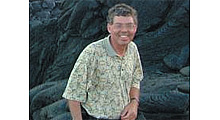
Doug Lung
The FCC issued a Public Notice last week with additional information related to the repacking and also announced a workshop/webinar to provide additional detail.
The Public Notice and its Technical Appendix describe two ways that the FCC can determine if all the stations not participating in the incentive auction will be able to find a channel (which may be their current channel) that meets the Spectrum Act's requirement that the FCC make “all reasonable effort” to protect stations' coverage.
As I read the Public Notice, a station's ultimate coverage would not be impacted whether the FCC picks the “satisfiability solver,” the “integer optimization solver” or a combination of the two. In either case, the results will be based on whether or not every station staying on the air can be assigned a channel that complies with the domain.csv file restrictions based on land-mobile and international obligations and the interference_paired.csv file created by TVStudy.
These “solvers” will take a given channel range for broadcasters (the Public Notice used channels 14-30 as an example) and provide an output showing whether the plan is feasible. As the “solvers” could take a long time to find the solution, the Commission proposes setting a time limit for the study after which the result would be determined to be “non-feasible.”
The two “solvers” won't necessarily provide the optimum solution, although they will allow the FCC to conduct multiple rounds in a short period of time using a “descending clock auction” or something similar. Once the auctions are finished and the available channels are defined, further optimization is possible. The FCC isn't limiting the choice of “solvers” to the two mentioned above--the goal is to find the best solution in a limited amount of time.
The Public Notice explained that: “The same data also could be used to optimize channel assignments after the bidding is completed, however, without slowing down the bidding process. Such optimization analysis could consider, in addition to the applicable constraints, additional factors such as minimizing the number of channel changes and minimizing the estimated costs of repacking. Also, if the Commission chooses to use a sealed-bid auction design, then optimization could be used to determine which bids to accept in order to obtain a given amount of spectrum at minimum cost.”
It cautioned: “The full Commission will make final decisions regarding the repacking process and other elements of the incentive auction; the Commission has made no final decision on the matters we address here.”
The Public Notice added: “Given that the Commission has not yet decided on an auction design, it is possible that the Commission will pick a design that would allow for the use of optimization analysis during the auction.”
In my opinion, broadcasters should really concentrate on the assumptions and parameters used to create the domain.csv and interference_paired.csv files. The FCC has proposed using proxy channels rather than the actual channels (before and after repacking) to determine interference and coverage. From the analysis I've seen, use of proxy channels will benefit some stations and will hurt others. Looking at the “solvers,” a question arises as to whether or not actual channels instead of proxy channels could be used. This would obviously increase the computation time and require a significantly larger interference_paired.csv file as an entry would have to be created for all possible channel combinations.
The biggest risk for broadcasters would be if the “solver” that’s selected indicates that giving up “X’ number of channels is feasible and then that spectrum is auctioned; however, when the final optimization is done---ideally using real channels instead of proxy channels--it shows only “X-2” channels can really be reallocated for wireless broadband.
If such a situation should occur, it probably won't be the fault of the “solver,” but rather the assumptions used in creating the inputs files that the “solver” works with.
For additional information, refer to Public Notice DA 14-3: Incentive Auction Task Force Released Information Related to Repacking; Announces Workshop/Webinar to Provide Additional Detail. The FCC has not set a date for the workshop/webinar, but said that it would be in February.
The professional video industry's #1 source for news, trends and product and tech information. Sign up below.

Doug Lung is one of America's foremost authorities on broadcast RF technology. As vice president of Broadcast Technology for NBCUniversal Local, H. Douglas Lung leads NBC and Telemundo-owned stations’ RF and transmission affairs, including microwave, radars, satellite uplinks, and FCC technical filings. Beginning his career in 1976 at KSCI in Los Angeles, Lung has nearly 50 years of experience in broadcast television engineering. Beginning in 1985, he led the engineering department for what was to become the Telemundo network and station group, assisting in the design, construction and installation of the company’s broadcast and cable facilities. Other projects include work on the launch of Hawaii’s first UHF TV station, the rollout and testing of the ATSC mobile-handheld standard, and software development related to the incentive auction TV spectrum repack. A longtime columnist for TV Technology, Doug is also a regular contributor to IEEE Broadcast Technology. He is the recipient of the 2023 NAB Television Engineering Award. He also received a Tech Leadership Award from TV Tech publisher Future plc in 2021 and is a member of the IEEE Broadcast Technology Society and the Society of Broadcast Engineers.
